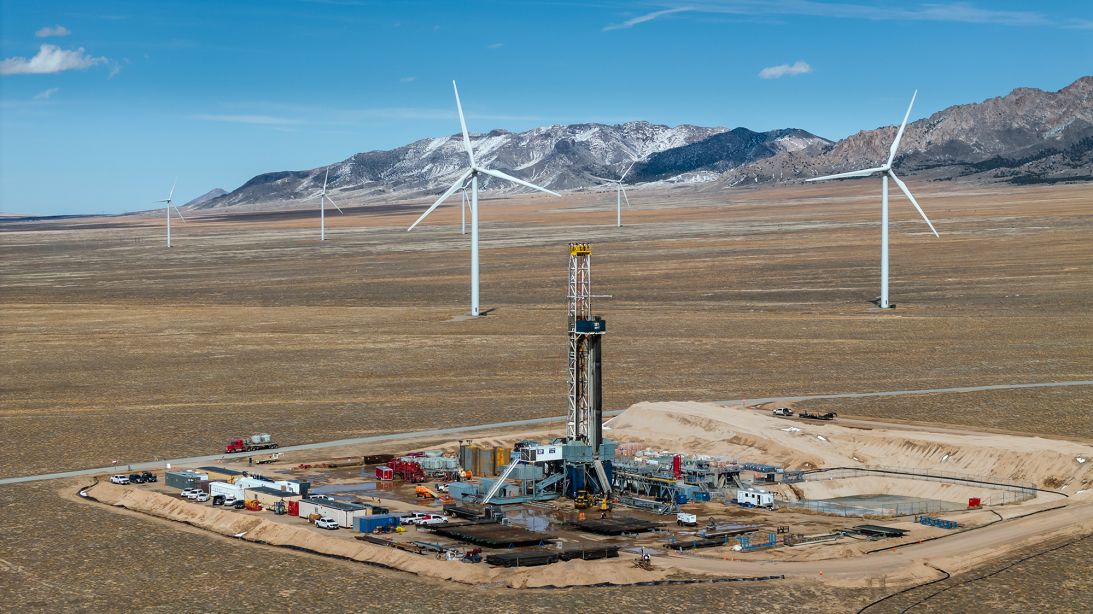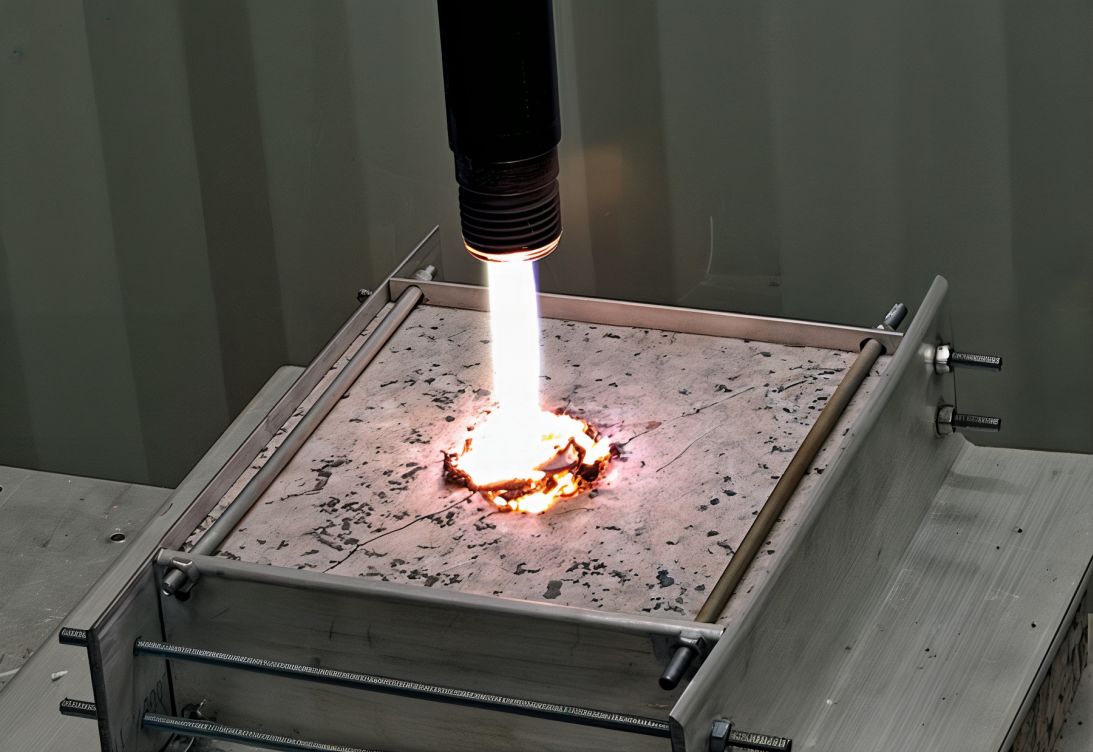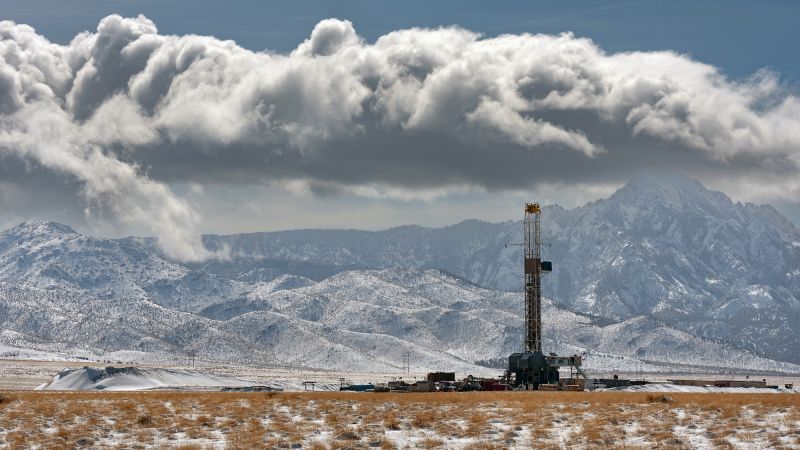Deep beneath Utah’s desert soil, an oil drill bored through the Earth at a blistering pace earlier this spring. Gnarly looking drill bits tore through granite at around 300 feet per hour.
It was done after just 16 days. The borehole, completed in April, stretches nearly 3 miles toward the center of the Earth, where temperatures reach around 500 degrees Fahrenheit and fossil fuels lurk between ancient sediments.
But this project is not searching for fossil fuel. It’s seeking next-generation clean energy.
Fervo Energy, the Houston-based company leading the project, is one of several using the tools and advanced techniques of the oil and gas industry to drill many miles underground to reach the hot rock below. Their quest is to make clean, abundant geothermal energy available anywhere on the planet.
Next-gen geothermal has the potential to meet global electricity demand 140 times over, according to the International Energy Agency. It’s one of the only forms of clean energy that may be palatable for the fossil fuel-focused Trump administration.
Yet the pathway to success is littered with challenges, from high costs and complex engineering problems to the risk of earthquakes as drills prod deep into the ground.
Advocates say geothermal could be a clean energy gamechanger. But to work, the industry needs to figure out how to drill deeper, faster and more cheaply — and time is of the essence as the climate crisis escalates.
Humans have used geothermal energy for thousands of years, first for cooking and bathing, and more recently for heating homes and generating electricity.
It is the stuff of clean-energy dreams: near limitless and available 24/7.
Solar and wind are cheap but intermittent, relying on the sun shining and the wind blowing. Finding a so-called baseload source of clean energy that can support them, one that can turn on with the flick of a switch and run all the time, is a climate holy grail — especially as electricity demand soars, driven by AI and data centers.
This is where geothermal could shine. The problem is how to scale it.
Conventional geothermal needs natural, underground reservoirs of hot water or steam, and it needs the rocks down there to be porous, allowing the water to move through them, heat up, and be sucked up to the surface.
This geology is rare, present only in certain places including China, Iceland, Kenya and parts of the United States. Geothermal currently accounts for less than 1% of global demand.
Next-gen geothermal promises get around these limitations. It just needs heat; the rest it creates artificially.
Fervo’s next-gen technique is called “enhanced geothermal.”
It drills two wells deep underground, first vertically then horizontally. It pumps down fluid at high pressure to shatter the rock in a process called hydraulic fracturing, or “fracking,” very similar to the technique used to extract oil and gas. Water is then pumped down one well, to circulate through the cracks and heat up, before it’s brought to the surface via the second well.
The US has been experimenting with enhanced geothermal since the 1970s, when scientists at the Los Alamos Laboratory in New Mexico proved it was possible to harvest heat from fractures in the ground, said Jefferson Tester, a professor of sustainable energy systems at Cornell University, who was involved in the project.
Decades later, two projects, both in southwest Utah, have taken up the reins, armed with more advanced technology.
Utah FORGE, a $300 million research project supported with Department of Energy funding, kicked off in 2014. Its goal is “to create geothermal reservoirs where none exist naturally,” said Joseph Moore, a University of Utah geologist and project leader of Utah FORGE.
A breakthrough came in April 2024 when they successfully circulated water through rock 1.5 miles deep and brought hot water to the surface.
Right next door is Fervo, which uses know-how gleaned from FORGE. It completed a commercial pilot facility in Nevada in 2023 that’s able to deliver power to the grid.
In Utah, it’s building “the largest next-generation geothermal power plant in the world,” said Tim Latimer, Fervo’s CEO and co-founder. The company’s aim is to deliver its first 100 megawatts of geothermal energy by 2026 and add 400 more by 2028, enough to power more than 375,000 homes.
Fervo believes its technology can boost geothermal energy in the US by hundreds of gigawatts, starting in the West where it’s hotter at shallower depths, then moving east. It has already signed a deal with Google to provide power to its data centers and has 600 megawatts of power purchase agreements with utilities like Cal Edison.
Experts are excited by the company’s progress. “It’s not cheap to do this, but if they’re successful, it will be a big step forward,” Cornell’s Tester said.

Enhanced geothermal still faces many challenges: slashing costs, scaling up drilling under high-pressures and temperatures, and water use. There are also land issues. While the surface footprint of geothermal is small compared to solar or wind, it’s still a big industrial endeavor with trucks and drilling rigs.
Perhaps one of its most high-profile issues is earthquakes.
“If you drill a well and you pump super high-pressure fluids down it and cause a lot of rock shattering at depth, that’s going to be felt at the surface,” said Gillian Foulger, a geologist at Durham University.
The specter of what happened in Pohang, South Korea, still looms.
In November 2017, a magnitude 5.5 earthquake shook the city, believed to have been triggered by an enhanced geothermal project. It was one of the country’s most destructive earthquakes on record, injuring around 100 people and forcing thousands into emergency housing.
Advocates believe the risks of similar big events are low. “The beauty of a geothermal system is you actually are always monitoring the seismicity,” Tester said. “I think those risks are very manageable.”
Still, it can make a dent in public perception.
Earthquakes are “an industrial nuisance, basically akin to pollution,” Foulger said. They are also fundamentally unpredictable. A project could operate without issue for a decade, “and then suddenly you could get troubling earthquakes,” she told CNN.
Some companies are developing a different technology able to decrease the earthquake risk.
It involves no fracking. Instead, it’s like a “massive underground radiator,” said Robert Winsloe, an executive vice president at the Canadian-based company Eavor.
Eavor’s technique works like this: it drills two deep vertical wells close to each other and brings them together horizontally in a closed loop. It then drills and connects multiple loops off the horizontal pipe. Water circulates through the pipes, picking up heat from the rock and flowing to the surface.
The company is constructing its first commercial plant in the German town of Geretsried, outside Munich, burrowing nearly 2.8 miles into the ground.
Operating costs are very low, as is seismic risk. But many experts question whether it could ever be economically viable given thr eye-watering upfront costs. The system relies on huge loops to collect enough heat, Moore said: “It’s very expensive drilling.”
Winsloe is honest about the challenges, but if the economics stack up, he said, “this is the game changer that we’re looking for.”

Other companies are trying to go deeper and hotter, using technology that sounds straight out of a sci-fi movie.
Massachusetts-based Quaise Energy wants to drill down more than 6 miles to reach temperatures of over 900 degrees Fahrenheit, by vaporizing dense rock.
Its gyrotron device produces high-powered energy waves that will be sent down a long metal tube miles into the Earth to destroy rock by heating it to temperatures of around 3,600 degrees Fahrenheit.
The company is conducting field trials in Texas, and plans to drill its first full size geothermal boreholes by 2028. The eventual aim is to be able to drill 6 miles in just 100 days, said Matthew Houde, co-founder and chief of staff at Quaise.
For comparison, the deepest well ever drilled, the Kola borehole in Russia completed in 1992, is 7.5 miles deep and took two decades to drill.
Quaise’s plans are bold but many are skeptical. “Quaise really hasn’t done a lot in terms of field demonstrations yet,” Tester said. “They’ve made some incredible claims, and I’m not even sure that they’ll get there.”
Moore simply said, “Show me that you can do it.”

A big advantage of geothermal in the US is that it seems to be the rare form of energy with bipartisan support. It’s green and creates jobs, pleasing Democrats. It’s home-grown and fits with an energy independence agenda, pleasing Republicans.
Even better, geothermal harnesses years of American drilling and fracking know-how from oil and gas extraction, helping bridge an energy culture long dominated by fossil fuels.
“Perhaps geothermal might be one of the few things that actually survives without serious cuts, because it’s so heavily connected to oil and gas,” Tester said.
It provides an easy transition for oil and gas workers, said David Turk, the former deputy energy secretary in the Biden administration. “We’ve done more fracking and more drilling than any other country in the entire world,” Turk told CNN. “We have a ready-made workforce.”
Trump’s Energy Sec. Chris Wright sat on the board of Fervo before starting his post at the Department of Energy. And geothermal has so far seemed to escape the chainsaw the Trump administration has taken to other forms of renewable energy.
Turk said he’s heartened to see geothermal getting a small funding boost in Trump’s budget request, but added the government should be prepared to step in with more financial support to help really kickstart the technology.
Energy Department spokesperson Olivia Tinari sounded a positive note. “While geothermal energy hasn’t achieved liftoff yet, it should, and it can,” she told CNN in a statement. “A mature geothermal industry will energize our country.”
For now, eyes are on the companies racing to make next-gen geothermal a commercial reality.
Some experts remain cautious. Durham University’s Gillian Foulger, who has worked in geothermal for four decades, said companies trumpet big breakthroughs all the time. “I’ve heard that just about every year for the last 20 years,” she said.
Foulger thinks commercialization is still two decades away. But if it can be done, she added, “the potential payoff is pretty significant.”
Fervo’s Latimer is unsurprisingly far more bullish. “The pace of technology innovation in geothermal has outpaced what really any market observers expected,” he said.
And the opportunity is too enormous to ignore, he added. “You could meet humanity’s energy needs for 17 billion years based off just what’s in the heat of the Earth.”

